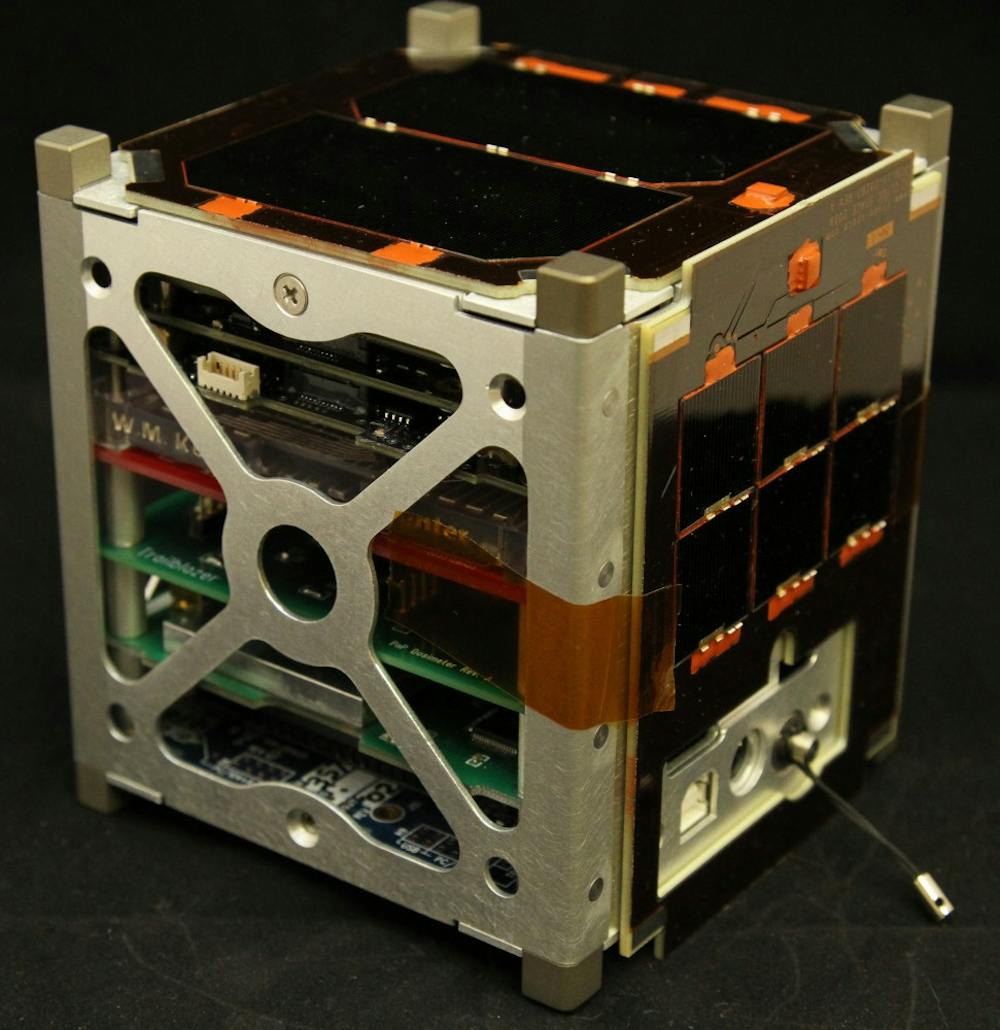news@dailylobo.com
UNM’s first-ever satellite project is NASA-ready after four years in the making.
In 2009, the Electrical and Computer Engineering Department submitted a plan to build a nanosatellite to be launched into Earth’s orbit in response to a challenge issued by NASA’s Education Launch of Nano Satellites initiatives.
Work on the satellite began in 2011 after UNM received NASA’s approval. The resulting nanosatellite, named Trailblazer, is scheduled to be launched from an Air Force base in Virginia this June.
The two-pound, four-inch, cube-shaped nanosatellite will circle the Earth at approximately five miles per second and face extreme temperatures and vibrations, all in the name of testing new materials fabricated by 3-D printers and an Air Force communications network. 3-D printers fabricate a solid object out of composite materials from a digital model.
Trailblazer’s launch is expected to bring great things to UNM, said Christos Christodoulou, a professor of electrical and computer engineering and director of the Configurable Space Microsystems Innovations and Applications Center.
“This is the first time that we not only built a satellite from scratch, but decided to launch something that the students built,” Christodoulou said. “And that’s just the beginning.”
COSMIAC is a center in the Electrical and Computer Engineering Department that focuses on research, community outreach and economic development in New Mexico. It’s connected to the Air Force Research Laboratory and federally funded through the Phillips Technology Institute. The purpose of the COSMIAC is to research and develop aerospace technology, share that knowledge with college and high school communities, and use its technological success to draw private aerospace companies into the state.
Once in orbit, Trailblazer is slated to do three things: test a network system developed by the Air Force, measure atmospheric radiation, and test the viability of 3-D-printed electronics for use in spacecraft components.
However, in order to serve its purpose, Trailblazer first has to survive the elements to which it will be exposed.
“The tricky part about space is that it’s such an extremely brutal environment,” said Craig Kief, deputy director of COSMIAC.
To survive in space, Trailblazer will have to endure temperatures between 10 and 400 degrees Celsius, as well as violent shaking during launch. Researchers put the satellite through a set of simulations to ensure it would be able to perform correctly.
Get content from The Daily Lobo delivered to your inbox
Kief said the project was funded through a grant from the Air Force Research Laboratory, and the satellite cost $40,000 to make.
After a successful test of Trailblazer, COSMIAC plans to expand its aerospace education programs at UNM. Christodoulou said that because about 25 undergraduates helped with the Trailblazer project, interest in this type of research among engineering students is expected to rise.
“The (Department) of Engineering is planning to keep adding more courses in the aerospace engineering field. We expect, as we teach these courses, to attract more students,” he said. “And we expect, very soon, (for aerospace) to be a college in the Department of Engineering.”
Jacy Bitsoie, a third-year undergraduate civil-engineering major, has been working with the Trailblazer project since May. She has been working on paperwork to ensure that the government will allow Trailblazer to launch.
“It feels like you get paid to play,” Bitsoie said.
Bitsoie plans to stay with the project and help with the next satellite, ORS-Squared, set to launch from Hawaii in early 2014. ORS-Squared is also sponsored by NASA.
UNM does not offer an aerospace degree, but this project generated interest in other engineering students as a way to gain research experience for graduate school.
“If you get the opportunity, definitely take it. The experience is invaluable because it prepares you for the workforce later on, both from a fundamental working standpoint and the technical background,” said Matt McCullough, a fourth-year electrical engineering major who has been working with COSMIAC since the summer of 2012 with the Trailblazer ground station.
Kief said that with forthcoming contracts from NASA and the Air Force, hopes are high for the future of the aerospace program at UNM and the creation of an aerospace engineering major.
“NASA likes working with us now because of the fact that we have proven experience. Also we have the students who can build this kind of hardware, so that makes UNM more marketable to the space research community,” Kief said.






